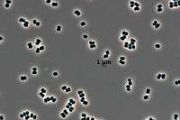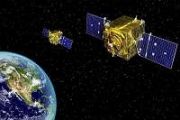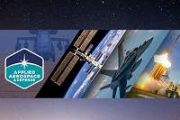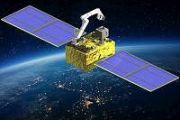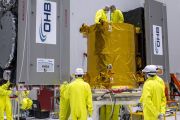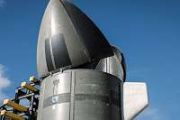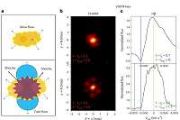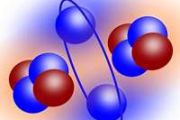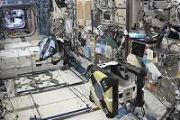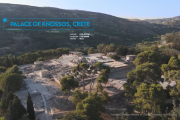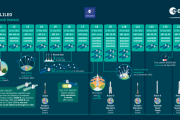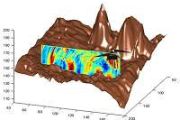
Copernical Team
Astronomers find galactic "fruit, vegetable garden" outside Milky Way
 Using China's gigantic optical telescope, astronomers have discovered a record number of small compact galaxies outside the Milky Way where star formation is taking place at a rapid pace.
With the help of the Large Sky Area Multi-Object Fiber Spectroscopic Telescope (LAMOST), a team of researchers under the aegis of the National Astronomical Observatories of the Chinese Academy of Sciences
Using China's gigantic optical telescope, astronomers have discovered a record number of small compact galaxies outside the Milky Way where star formation is taking place at a rapid pace.
With the help of the Large Sky Area Multi-Object Fiber Spectroscopic Telescope (LAMOST), a team of researchers under the aegis of the National Astronomical Observatories of the Chinese Academy of Sciences AIP report: Harassment, discrimination in astronomy takes many forms
 The existence of harassment and discrimination in academia has been well documented across a variety of fields of study. A report from the American Institute of Physics goes beyond the numbers to examine types of harassment experienced by members of the astronomy community over the span of a decade, highlighting the pervasiveness of the issue.
The AIP Longitudinal Survey of Astronomy Gradu
The existence of harassment and discrimination in academia has been well documented across a variety of fields of study. A report from the American Institute of Physics goes beyond the numbers to examine types of harassment experienced by members of the astronomy community over the span of a decade, highlighting the pervasiveness of the issue.
The AIP Longitudinal Survey of Astronomy Gradu Stellar motions reveal backbone of the Large Magellanic Cloud
 Using data from the VISTA survey of the Magellanic Clouds system (VMC), researchers at the Leibniz Institute for Astrophysics Potsdam (AIP), in collaboration with scientists from the VMC team, confirmed the existence of elongated orbits which are at the backbone of the bar formation process. The method used repeated imaging observations to construct a velocity map of stars in the central region
Using data from the VISTA survey of the Magellanic Clouds system (VMC), researchers at the Leibniz Institute for Astrophysics Potsdam (AIP), in collaboration with scientists from the VMC team, confirmed the existence of elongated orbits which are at the backbone of the bar formation process. The method used repeated imaging observations to construct a velocity map of stars in the central region Juice's journey and Jupiter system tour
 ESA's Jupiter Icy Moons Explorer, Juice, is set to embark on an eight-year cruise to Jupiter starting April 2023. The mission will investigate the emergence of habitable worlds around gas giants and the Jupiter system as an archetype for the numerous giant planets now known to orbit other stars.
This animation depicts Juice's journey to Jupiter and highlights from its foreseen tour of the
ESA's Jupiter Icy Moons Explorer, Juice, is set to embark on an eight-year cruise to Jupiter starting April 2023. The mission will investigate the emergence of habitable worlds around gas giants and the Jupiter system as an archetype for the numerous giant planets now known to orbit other stars.
This animation depicts Juice's journey to Jupiter and highlights from its foreseen tour of the Redwire provides solar arrays for new weather and climate research satellite
 Redwire Corporation (NYSE: RDW), a leader in space infrastructure for the next generation space economy, is supplying solar array technology that will power the newest of PlanetiQ's weather and climate monitoring satellites, GNOMES-3, which is aboard the Transporter 4 launch scheduled to lift off on April 1, 2022 from Cape Canaveral Space Force Station in Florida.
GNOMES-3, the third satel
Redwire Corporation (NYSE: RDW), a leader in space infrastructure for the next generation space economy, is supplying solar array technology that will power the newest of PlanetiQ's weather and climate monitoring satellites, GNOMES-3, which is aboard the Transporter 4 launch scheduled to lift off on April 1, 2022 from Cape Canaveral Space Force Station in Florida.
GNOMES-3, the third satel Pluto's giant ice volcanos may have formed from multiple eruption events
 Scientists on NASA's New Horizons mission team have determined multiple episodes of cryovolcanism may have created some kinds of surface structures on Pluto, the likes of which are not seen anywhere else in the solar system. Material expelled from below the surface of this distant, icy planet could have created a region of large domes and rises flanked by hills, mounds and depressions. New Horiz
Scientists on NASA's New Horizons mission team have determined multiple episodes of cryovolcanism may have created some kinds of surface structures on Pluto, the likes of which are not seen anywhere else in the solar system. Material expelled from below the surface of this distant, icy planet could have created a region of large domes and rises flanked by hills, mounds and depressions. New Horiz Sols 3428-3429 has the science definitely overflowing
 Unfortunately, our weekend drive stalled, so this morning we found ourselves still at Friday's workspace. Fortunately, it was an understood issue... and this was a good place to spend some extra time and fill our science glass with amazing data!
This workspace ("Hartle Loup") has examples of different textures, bands of "vuggy" (the little holes or pits that you can see in the above image)
Unfortunately, our weekend drive stalled, so this morning we found ourselves still at Friday's workspace. Fortunately, it was an understood issue... and this was a good place to spend some extra time and fill our science glass with amazing data!
This workspace ("Hartle Loup") has examples of different textures, bands of "vuggy" (the little holes or pits that you can see in the above image) Mounds of ice in craters give new insight into Mars' past climate
 Newly discovered deposits of layered ice in craters scattered around Mars' southern hemisphere provide insights into how the planet's orientation controlled the planet's climate over the past 4 million years, according to a new study. The findings help scientists understand what controlled Mars' past climate, which is essential for predicting when the planet could have been habitable.
The
Newly discovered deposits of layered ice in craters scattered around Mars' southern hemisphere provide insights into how the planet's orientation controlled the planet's climate over the past 4 million years, according to a new study. The findings help scientists understand what controlled Mars' past climate, which is essential for predicting when the planet could have been habitable.
The Koons on the Moon -- sculptures to be placed on lunar surface
 American pop artist Jeff Koons is to send sculptures to the Moon later this year on a spacecraft blasting off from the Kennedy Space Center in Florida, his gallery said Tuesday.
Koons, one of the most celebrated and expensive living artists, is famed for kitsch pieces such as "Ballon Dog" and "Rabbit," and his work is exhibited in galleries around the world.
His latest project "Moon Phas
American pop artist Jeff Koons is to send sculptures to the Moon later this year on a spacecraft blasting off from the Kennedy Space Center in Florida, his gallery said Tuesday.
Koons, one of the most celebrated and expensive living artists, is famed for kitsch pieces such as "Ballon Dog" and "Rabbit," and his work is exhibited in galleries around the world.
His latest project "Moon Phas Embry-Riddle developed instruments headed for space
 As Embry-Riddle Aeronautical University Engineering Physics senior Josh Milford works toward a career in space science, he is already gaining specialized hands-on experience building, calibrating and configuring instruments that will fly aboard satellites due to launch early next month. The project is a culmination of multi-year work that progressed throughout the pandemic.
"While working
As Embry-Riddle Aeronautical University Engineering Physics senior Josh Milford works toward a career in space science, he is already gaining specialized hands-on experience building, calibrating and configuring instruments that will fly aboard satellites due to launch early next month. The project is a culmination of multi-year work that progressed throughout the pandemic.
"While working 
